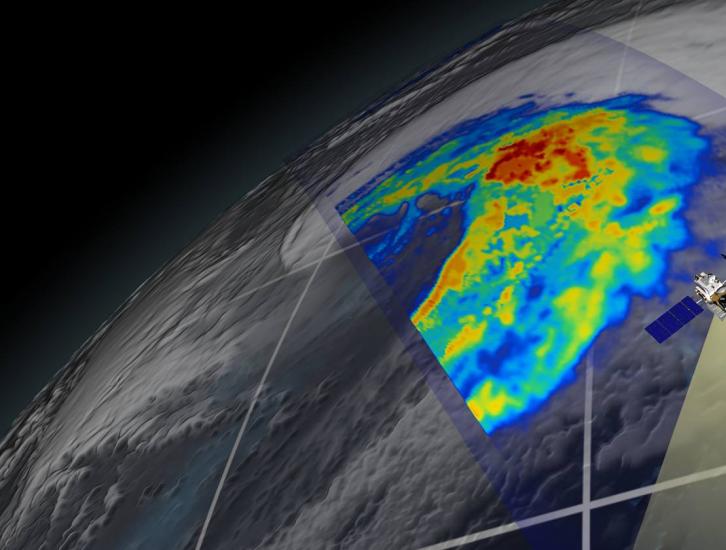
Lightning Imaging Sensor (LIS)
The Lightning Imaging Sensor is a small, highly sophisticated instrument that detects and locates lightning over the tropical region of the globe. Looking down from a vantage point aboard the Tropical Rainfall Measuring Mission (TRMM) observatory, 250 miles (402 kilometers) above the Earth, the sensor provides information that could lead to future advanced lightning sensors capable of significantly improving weather "nowcasting."
Using a vantage point in space, the Lightning Imaging Sensor promises to expand scientists' capabilities for surveying lightning and thunderstorm activity on a global scale. It will help pave the way for future geostationary lightning mappers. From their stationary position in orbit, these future lightning sensors would provide continuous coverage of the continental United States, nearby oceans and parts of Central America. Researchers hope that future sensors will deliver day and night lightning information to a forecaster's work-station within 30 seconds of occurrence — providing an invaluable tool for storm "nowcasting" as well as for issuing severe storm warnings.
The lightning detector is a compact combination of optical and electronic elements including a staring imager capable of locating and detecting lightning within individual storms. The imager's field of view allows the sensor to observe a point on the Earth or a cloud for 80 seconds, a sufficient time to estimate the flashing rate, which tells researchers whether a storm is growing or decaying.
The sensor was developed by the Global Hydrology Center at NASA's Marshall Space Flight Center in Huntsville, Ala., in conjunction with Lockheed Martin, Palo Alto, Calif., and Kaiser Electro Optics, Carlsbad, Calif. The sensor provides information on cloud characteristics, storm dynamics, and seasonal as well as yearly variability of thunderstorms.
The Lightning Imaging Sensor will be three times more sensitive than a predecessor instrument known as the Optical Transient Detector — a lightning detector already orbiting the Earth. The sensor studies both day and night cloud-to-ground, cloud-to-cloud and intra-cloud lightning and its distribution around the globe.
The staring imager is made of an expanded optics lens system which provides a wide field of view and a narrow-band filter which minimizes background light. A highspeed, charge-coupled device detection array behaves similarly to the retina of the human eye by creating an image of the lightning event and the background scene. A real-time event processor then extracts the signal, thus determining when a lightning flash occurs.
The optics lens system allows lightning detection even in the presence of bright, sunlit clouds. Weak lightning signals that occur during the day are hard to detect because of background illumination. This system will remove the background signal, enabling the detection of 90 percent of all lightning strikes. Data recorded includes the time of a lightning event, its radiant energy — how bright the lightning flash is — and an estimate of the lightning location.
The Lightning Imaging Sensor is approximately eight inches in diameter and 14 inches high, while the supporting electronics package is about the size of a standard typewriter. Together, the two modules weigh approximately 46 pounds and use about 25 watts of power.

